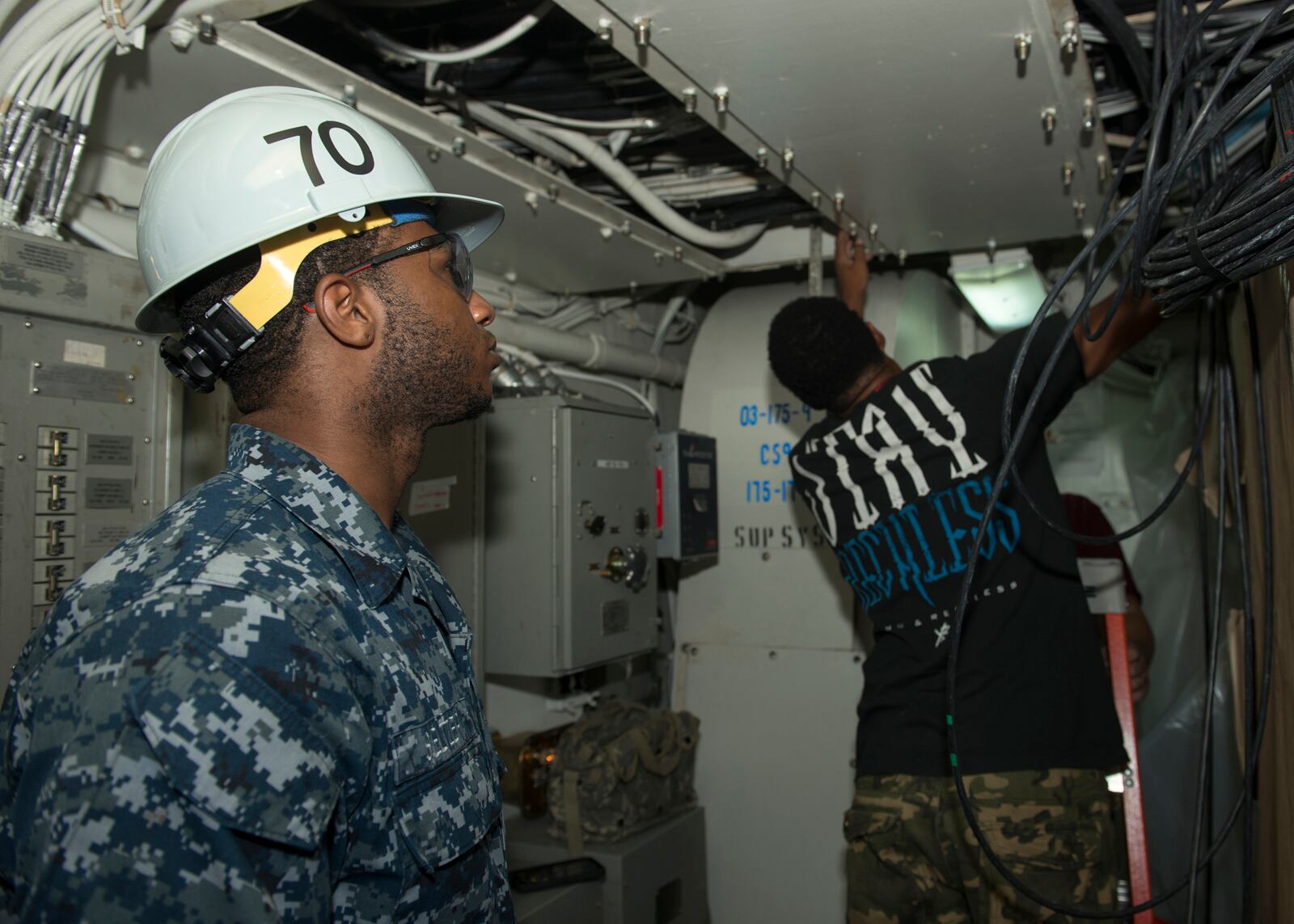The Navy is holding to course with its long-term plan to deploy an advanced at-sea network on board its warships and at coastal facilities. The ambitious Consolidated Afloat Networks and Enterprise Service, or CANES, aims to create a shipboard tactical network that equips vessels and shoreside facilities with improved information assurance, firewalls with intrusion detection capabilities, and an adaptable IT platform.
CANES is designed to replace and consolidate the functions of five separate legacy command, control, communications, computer, and intelligence systems into a single integrated software-based platform. Based on commercial-off-the-shelf products and an open architecture, CANES is expected to supply the Navy with a fully adaptable IT platform that will meet its IT and network needs for many years, perhaps even decades. Since CANES specifically targets the Navy's IT systems and networks, not core naval functions, the project doesn't cover combat systems or machinery control networks.
So far, so good
The Navy launched CANES in 2010 by announcing its goals and calling for bidders. Northrop Grumman and Lockheed Martin initially competed for the opportunity to become the project's single prime contractor. When the Navy made its decision in early 2012, Northrop Grumman was selected to develop the initial CANES plan.
In August 2014, the Navy Space and Warfare Systems Command (SPAWAR) raised the CANES stakes by awarding full production contracts, with an estimated cumulative value of $2.5 billion, to five vendors that agreed to compete for individual delivery orders throughout the life of the contract. The final eight-year indefinite delivery, indefinite quantity contracts were issued to BAE Systems Technology Solutions and Services, General Dynamics C4 Systems, Global Technical Systems. Northrop Grumman Technical Systems, and Serco. In January 2015, the Navy added CGI Federal and DRS Laurel Technologies.
Each vendor committed to building a single destroyer-class system for the Navy and would then compete for work during the rest of the program. The Navy expects to install CANES on nearly 200 vessels by August 2022 under SPAWAR management. PMW 160, the Navy's Tactical Networks Program Office, is in charge of designing, acquiring, modernizing, and ultimately deploying CANES.
In February 2016, USS Nimitz (CVN 68) became the latest aircraft carrier to receive a CANES upgrade to its network infrastructure. As with other CANES deployments, the system is expected to improve the speed of the network and Internet access to all hands aboard Nimitz.
The Nimitz system includes approximately 1,300 new workstations that are designed to help sailors both professionally and personally by allowing them to conduct research, manage their time through the use of installed software, enhance qualifications, and generally improve their morale.
Sailing ahead
Deployment is going very well, said Capt. William "Ben" McNeal, program manager, Tactical Networks Program Office (PMW 160), Navy Program Executive Office C4I.
"Since the first ship installation on USS McCampbell was completed in November 2013, CANES has been installed on 29 surface ships, including three aircraft carriers and two amphibious assault ships," he said. McNeal noted that the Navy has also started incrementally installing CANES on submarines. "By that I mean that we have installed the rack infrastructure that will support future CANES hardware and software installations on two ballistic missile submarines and one fast attack submarine," he said.
Cyber defense improvements
Perhaps the biggest benefit the Navy receives by transitioning to a virtualized, cloud-based system is the ability to significantly improve its cyber defense capabilities. CANES is designed to equip vessels with enhanced and consolidated information assurance capabilities, including firewall and intrusion detection systems, providing a defense-in-depth approach to combating cyberattacks. The CANES system architecture also features a core enterprise services domain for running central operating systems and applications, a communications domain to handle routing and gateway management, and a computing domain designed to support voice communications and various end-user services.
Unlike the networks it's replacing, CANES is designed and funded for continuous technology refresh cycles, McNeal noted. "This refresh strategy enables the program's agility in reconfiguring, upgrading, or replacing hardware or software components as a means adapting to newly identified threats," he said
McNeal said PMW 160 is also working with the SPAWAR Fleet Readiness Directorate to determine if there are more efficient ways to conduct both CANES installs and technology refreshes.
"We anticipate completing initial installs on all ships and submarines in the target inventory in 2023," McNeal said. "CANES tech refreshes on all platforms, and initial CANES installations on new construction ships and submarines, will continue until at least 2033," he added.
Recent network technology developments, such as software-defined networking and network functions virtualization haven't gone unnoticed by CANES planners. "We are always looking to integrate new technologies into CANES," McNeal said. "It is part of the program's strategy."
According to McNeal, planners are also are examining hyperconverged infrastructure-based architectures as a possible approach for optimizing the virtual hosting of applications, thereby reducing CANES's current space, weight, and power envelopes, as well as potentially shrinking the scope and cost of future CANES technology refresh efforts.
Yet McNeal acknowledged that rapidly evolving IT technologies and cyberattack methodologies have forced CANES's planners to make periodic course corrections. "The pace of technology change and hardware and software life cycles has challenged us to modify our original schedule-driven technology refresh cycles to keep pace with event-driven cybersecurity threats," he said.
McNeal believes that CANES's original planners did a good job of anticipating future technology trends and addressing long-term needs. "If CANES were being planned today, we would certainly look to take advantage of the latest technologies available, but the basic strategy would be the same," he said.
RELATED: Capt. Jason Rider, Deputy Program Manager, Program Executive Office Unmanned Aviation and Strike Weapons, U.S. Navy, will speak on a panel about the military's increased use of unmanned systems and sensors for intelligence purposes at the C4ISR & Networks Conference on May 26th. For more information, click here.






